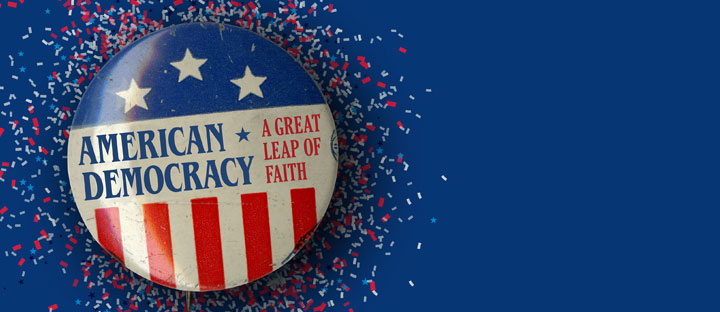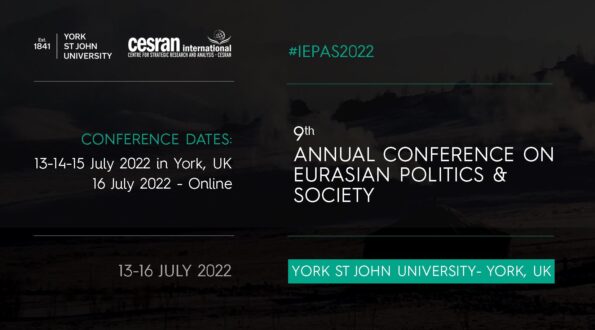
Tugche Veys
Research Fellow
Introduction
In recent years, extreme party polarisation in the United States (US), with the election of President Donald Trump, has questioned whether or not “American democracy is doomed” (Yglesias, 2015). Given the institutional structure of the American political system, some scholars argued that the US is facing democratic backsliding when two political parties (Republicans and Democrats) fail to formulate common policies (Charnock, 2018). In contrast, others argued that party polarisation has existed for a long time, and Trump is not the one who necessarily created it (Abramowitz, 2019). The current political environment is polarised not only in terms of the political parties but also amongst the voting public. Voters have become more affiliated with their parties, and this caused policy positions to be clustered on specific issues (Charnock, 2018). This can be explained in the context of primary elections. Fiorina et al. (2006) argued that people vote less in primary elections, yet, when they vote, they vote for the extreme candidates and decide which one of them fulfils their expectations. This situation challenges the existing state institutions and produces divisions among the executive and legislative branches. In light of these arguments, this paper will present a review of the literature on party polarisation and its possible consequences in the current American political sphere. By arguing that polarisation is a serious threat to American democracy, this paper will analyse how Trump’s presidency affects the democratic institutions in the US.
Authoritarian tendencies
Since Trump was elected as the president of the US, he behaved toward his opponents with hostility. As such, he identified Hillary Clinton as a criminal, called into question Obama’s citizenship (Mickey et al., 2017) and even supported the white nationalist mobilisation (Lieberman, 2019). This motivates to apply extreme measures that would help to beat the opponent. Mickey et al. (2017) argued that Trump’s leadership could result in competitive authoritarianism, that is, where democratic institutions are present, but there is a government abusing the state’s power for their benefit. They emphasise three ways of how democratic backsliding might occur in the US. The first is through the politicisation of state institutions and manipulating them to take sides in favour of the incumbent government (Mickey et al., 2017). For instance, security institutions such as the FBI, CIA, and NSA can be used to spy on political opponents, and in most cases, for blackmailing. The second way of power abuse occurs when elected autocrats silence civil movements, squelch intellectuals and hamper the media (Mickey et al., 2017). In this logic, the incumbent regime makes an effort to weaken opposition forces and ensure their position in the political game. Lastly, these autocrats change the nature of politics by rewriting and establishing new rules, making the competition harder for the rivals (Mickey et al., 2017). However, these concepts are not new to American politics. Southern Democrats already used similar tactics after the American Civil War, where they suppressed black people and poor white people to “ensure cheap agricultural labour and white supremacy” (Mickey et al., 2017, pp. 22-23). These autocrats were removed in the 1970s, yet, they left behind a Congress which generated polarisation, causing the Republicans to become right-wing than ever (Mickey et al., 2017). As a result, democratisation in the South fostered extreme polarisation. Hence, seeing the historical causes and the authoritarian tendencies of these political actors, it does not come as a surprise how Trump got elected into the presidential office. Specifically, the already-present polarisation combined with the fairly recent democratic structure of the US gave birth to the election of Trump as president. In this logic, Trump’s presidency is not solely responsible for the emergence of polarisation. However, it is contributing to further polarisation. This is visible in Trump’s behaviour towards the media and intellectuals, political opponents, and immigrants with his racist discourse.
Undemocratic behaviour is likely to be punished where people have uniform beliefs on common policy areas. As Rustow (1970) argued, a building block for democracy to last is national unity regarding the limits of the political citizenry. However, if polarisation is prominent, voters become more tolerant to accept undemocratic behaviour. In other words, the larger the gap between the policy areas, the more the tolerance for undemocratic behaviour (Graham & Slovik, 2019). As a consequence, if people tolerate undemocratic behaviour, then this gives rise to political systems that are ambiguous, and particularly, hybrid in nature (Schleicher, 2015). Bermeo (2016) argued that there are three types of democratic backsliding: coup d’etats, executive coups by elected leaders, and election day fraud. The possibility that these would occur declined, yet, there are other challenges. First is promissory coups, where there is a promise to the public that coup-makers will restore democracy and defend democratic values (Bermeo, 2016). 1991 coup in Haiti can be an eminent example of this, identified by Harvey (1991) as “a correction of the democratic process”. The second is executive aggrandisement, which occurs when the checks and balances on the executive branch erode gradually and weaken the opponents’ power on the executive (Bermeo, 2016). Importantly, the danger lies in framing such behaviour emanating from a democratic process. Thus, the rules of the game can change towards undemocratic ends through democratic channels. This is visible in the current Trump era through the president’s discourse on the media/intellectuals or his threats of imprisonment of journalists (BBC, 2019). Finally, the last challenge is strategic election manipulation which consists of actions that help to advantage the incumbency for them to win the elections (Bermeo, 2016). It is important that the manipulation occurs in a non-fraudulent way and does not criticise the election. In this way, the process of holding and exerting more power becomes easier. All in all, the aforementioned concepts explain how American democracy is under threat as a consequence of party polarisation combined with Trump’s characteristics as a leader. Taking the historical reasons for polarisation into account, the arguments present how the democratic backsliding might take authoritarian forms of behaviour in the US.
State institutions and democratic norms
Party polarisation in the US produces gridlock and causes the passage of fewer laws by leaving the important issues out (Mickey et al., 2017). This is one of the main factors why state institutions erode. Galston (2010) argued that in the Senate and House of Representatives, the liberal-conservative divide between the two parties could be exemplified as the following: The most conservative Democrat is more liberal than the most liberal Republican. Concerning Congress, a place where two parties must converge in theory, the commonplace has ceased to exist (Galston, 2010). In a way, this situation is present regardless of the incumbent presidents. Whoever the president is, there will still be polarisation due to the dominant two-party system. With different media sources feeding the two distinct parties, the mainstream media (also called the traditional media) lost its influence in American politics. Consequently, the voting public became exposed to fake news and rather preferred to take their parties’ position on issues (Mickey et al., 2017). Biden’s inauguration is therefore not constituting a change in terms of structure. The two-party system does not diminish. Instead, it is fuelled even more. This also includes the Biden administration. A change in presidents does not take away the fact that a system in place favours polarisation—being a Republican or Democrat and seeing these two as the only options create a division embedded in the system. Therefore, Biden or Trump as presidents of different parties does not challenge the deeply embedded party system.
When power is divided between the legislative and executive branches, policymaking and the productivity of democracy get questioned where the public does not see much change in the political environment as a consequence of gridlock. Populism and anti-establishment views of the public, especially created with the inauguration of President Trump, further strengthen and lead to public distrust in the state institutions. However, again, the weakening of state institutions did not precisely start in the Trump era. As stated earlier, polarisation has been an ongoing process that started in the 1980s, after the Southern autocrats were removed from power. Hare and Poole (2014) argued that The Civil Rights Act (1964) and The Voting Rights Act (1965) are the roots of party polarisation in the US. According to this perspective, North America’s capitalism and geographically based representation created regional interests embedded in both parties and resulted in conflict between Republicans and Democrats. Race and economic inequality are at the heart of the disagreement. Non-proportional representation limited US politics to be centred around two main parties (Hare & Poole, 2014). In sum, historically created institutions in the US, in combination with today’s politics, laid the foundations for the fragility of American democracy.
With Trump getting into office, there has been much attention on the issue of polarisation because scholars argued that the radicalised Republican Party directly questioned the democratic foundations of the US more than ever in American history (Mickey et al., 2017). Hence, this pushed the divided public to face the dilemma of whether or not supporting Trump meant whether or not they support democratic norms and values (Carey et al., 2019). In this way, the question of “How polarised is the United States really?” is answered. In a situation where perceptions on supporting democracy or not depends on one single person, it shows how polarised a country is, and in this case, very. Yet, this does not imply that democracy cannot function. According to Wang (2014), party polarisation and the level of democracy are positively correlated. He argues that the higher the level of party polarisation, the higher the level of democracy in a country (Wang, 2014, p. 687). From this perspective, more party polarisation means that people would be more politically engaged in using their ideologies, leading them to make comprehensive political evaluations and help them to assess the government’s performance respectively (Wang, 2014). In essence, these features are the core components of an ideal democracy. Through this rationale, people would have clear information on parties’ political stances and what they represent (Wang, 2014). The public, thus, can vividly see which position stands better for them and make their decisions based on their perceptions, derived from the information they receive from their parties (Wang, 2014). It is key that parties represent the public’s preferences in state institutions as this fosters trust towards the government and the political system. Wang (2014) presents a distinct view on party polarisation, which is valuable in the context of party politics and democracy. However, the reality seems different. Since its establishment, Congress has highlighted the commitment and mutual respect amongst the parties, which enabled coalition-making. This core norm has been fading away by giving rise to” intra-partisan cooperation and loyalty” (Lieberman et al., 2019, p. 475).
Democratic norms diminish if politicians are prone to disregard the rules of the game, get involved with anti-democratic behaviour, and allow violence to take place to ensure their position in the office. Democratic backsliding occurs today by democratic channels and institutions, making it harder to oppose laws that are formed by democratically elected officials (Bermeo, 2016). The American democracy is, therefore, facing a challenge where democratic establishments can be used for undemocratic aims under deepened party polarisation. There is a risk that institutions can be easily manipulated and transformed into tools for partisan ends. All in all, party polarisation in the Trump era can be summarised as a period where authoritarian inclinations are coupled with pathological state institutions and weakening democratic norms. Therefore, it seems that the US democracy is facing serious problems.
Conclusion
This paper argued that party polarisation is not a new phenomenon and that it has already existed for a long time. However, under the Trump presidency, it deepened and led scholars to debate what this might mean for the future of democracy in the US. The literature shows that democratic backsliding in the US is a serious concern and needs attention. By showing the possible consequences of party polarisation, this paper analysed the autocratic behaviour of Trump, the vulnerability of US state institutions, and the importance of democratic norms.
References
Abramowitz, A., Mccoy, J., & Somer, M. (2019). United States: Racial Resentment, Negative Partisanship, and Polarization in Trump’s America. The ANNALS of the American Academy of Political and Social Science, 681(1), 137-156.
BBC. (2019, June 21). Trump threatens Time journalist with prison over photo. (https://www.bbc.com/news/world-us-canada-48696131
Carey, J., Helmke, G., Nyhan, B., Sanders, M., & Stokes, S. (2019). Searching for Bright Lines in the Trump Presidency. Perspectives on Politics, 17(3), 699-718.
Charnock, E. (2018). Party Polarisation in the United States. Political Insight, 9(3), 4-7.
Dombrink, J., Fiorina, M., Abrams, S., & Pope, J. (2006). Culture War? The Myth of a Polarised America. Contemporary Sociology: A Journal of Reviews, 35(4), 346-350.
Galston, W. (2010). Why a Hyper-Polarized Party System Weakens America’s Democracy. The Hedgehog Review, 12(3), 57-60.
Graham, M., & Svolik, M. (2019). Democracy in America? Partisanship, Polarization, and the Robustness of Support for Democracy in the United States (September 18, 2019). https://ssrn.com/abstract=3354559 or http://dx.doi.org/10.2139/ssrn.3354559
Hare, C. & Poole K.T. (2014). The Polarization of Contemporary American Politics. Polity, 46(3), 411-429.
Harvey, T. (1991, October 6). Junta Chief: Aristide May Return. Sun-Sentinel. https://www.sun-sentinel.com/news/fl-xpm-1991-10-06-9102090832-story.html
Lieberman, R., Mettler, S., Pepinsky, T., Roberts, K., & Valelly, R. (2019). The Trump Presidency and American Democracy: A Historical and Comparative Analysis. Perspectives on Poltics, 17(2), 470-479.
Mickey, R., Levitsky, S., & Way, L. (2017). Is America Still Safe for Democracy?: Why the United States Is in Danger of Backsliding. Foreign Affairs, 96(3), 20-29.
Rustow, D. (1970). Transitions to Democracy: Toward a Dynamic Model. Comparative Politics 2(3), 337–63.
Schleicher, D. (2015). Things Aren’t Going That Well Over There Either: Party Polarization and Election Law in Comparative Perspective. University of Chicago Legal Forum, 433-476.
Wang, C. (2014). The effects of party fractionalisation and party polarisation on democracy. Party Politics, 20(5), 687-699.
Yglesias, M. (2015, October 8). American democracy is doomed. Vox. https://www.vox.com/2015/3/2/8120063/american-democracy-doomed



